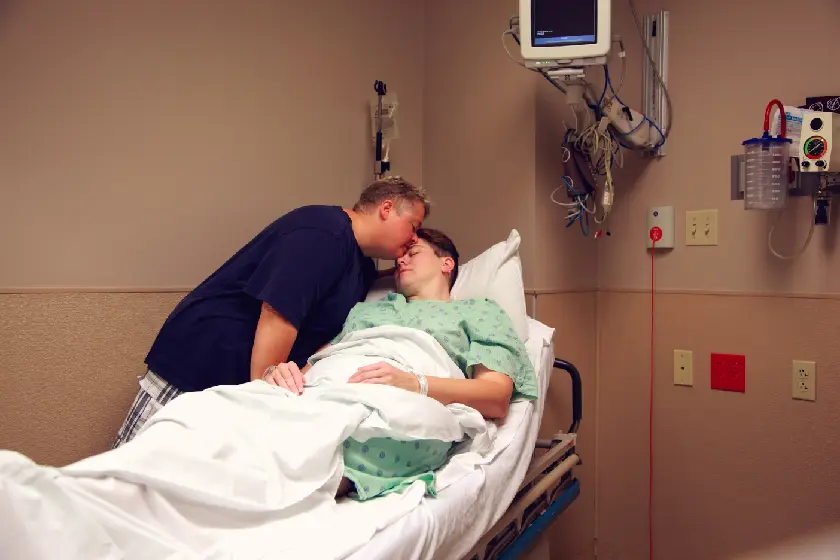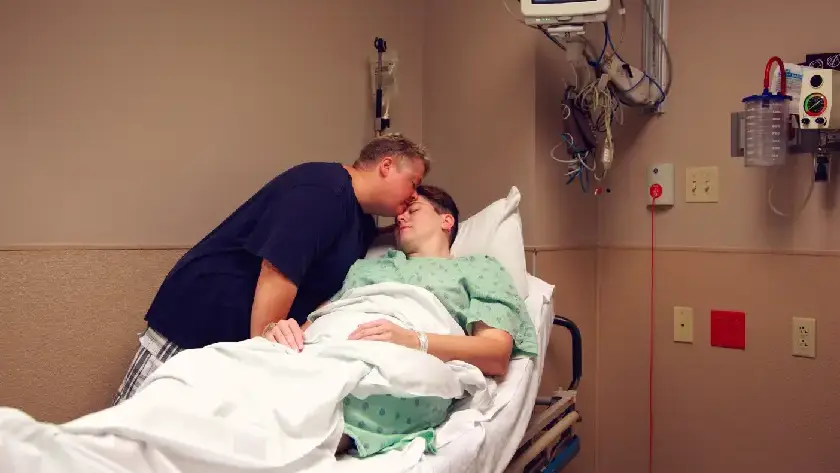|
Getting your Trinity Audio player ready...
|
Contents
- 1 General Principles of Recovery
- 2 Pre-Surgery Preparation
- 3 Immediate Post-Operative Phase (First Few Days)
- 4 Early Recovery (Weeks 1-3)
- 5 Intermediate Recovery (Weeks 3-8)
- 6 Long-Term Recovery (Months 2-6)
- 7 Full Recovery and Follow-Up (6-12 Months and Beyond)
- 8 Tips for a Smoother Recovery
- 9 Conclusion
- 10 FAQs
Gender-affirming surgery marks a powerful milestone in a person’s transition journey, helping align their physical body with their gender identity. While it brings emotional and psychological relief, it also involves a recovery period that requires time, care, and support. Whether undergoing sex change male-to-female (MTF) or gender affirming bottom surgery (FTM), understanding the full gender affirming surgery timeline is crucial for both physical healing and mental preparation.
This guide breaks down what to expect at every stage post-surgery, especially for those considering affirmation surgery in India and seeking the best care during their transformation.
General Principles of Recovery
Recovery after gender affirming surgery is not just about healing incisions, it involves emotional adjustment, physical rehabilitation, and continued gender-affirming care. Every individual’s journey is unique, but the general healing process can be segmented into phases. The recovery period varies depending on:
- The type of affirmation surgery (top, bottom, or facial surgery)
- Whether the patient is undergoing gender affirming treatment like hormone therapy
- Pre-existing health conditions or complications
- Surgical technique and post-op care
- The experience of the surgical team and the facilities of the hospital
For optimal recovery, it’s essential to work with the best gender reassignment surgeons at a trusted centre like Elegance Clinic, recognized as a best hospital for gender reassignment surgery in India.
Pre-Surgery Preparation
Before undergoing gender affirming surgery, preparation is both medical and mental:
- Medical clearance: Blood tests, ECG, hormone level monitoring, and anaesthesia assessments
- Mental health documentation: According to WPATH guidelines, individuals typically require one or more letters of recommendation from a qualified mental health professional
- Hormone therapy: Continued under medical supervision
- Lifestyle preparation: Quitting smoking, maintaining a nutritious diet, and arranging for post-op care
- Consent and expectation setting: Understanding the scope and limitations of surgery, and what results can realistically be achieved
Proper preparation ensures a smooth entry into the surgical phase and enhances healing later on.
Immediate Post-Operative Phase (First Few Days)
The first 3 to 7 days after gender affirming bottom surgery or chest surgery are critical. Most patients are hospitalized during this period for close monitoring:
- Pain and discomfort: Managed with medications
- Drain or catheter care: Depending on the surgery type (especially common in bottom surgery)
- Movement: Limited, though light walking is encouraged to prevent blood clots
- Emotional support: Patients may feel vulnerable or overwhelmed. Support from medical staff, family, or peer groups is valuable
For sex change male-to-female procedures, vaginal packing and dressings are carefully monitored. For FTM, grafts or flaps are observed for proper blood flow and healing.
Early Recovery (Weeks 1-3)
- Swelling and bruising begin to reduce
- Sutures and staples may be removed if not dissolvable
- Basic activities such as walking, eating, and light chores are resumed
- Daily wound care is critical
- For MTF patients, dilation routines begin to maintain vaginal depth and flexibility
- FTM patients may have dressing or support garments for chest or phalloplasty recovery
Most patients are advised to avoid driving, lifting, or any form of physical exertion during this time. Adherence to medical guidelines is key to preventing infection or complications.
Intermediate Recovery (Weeks 3-8)
By the 4th week, the body continues to heal externally, and internal healing progresses:
- Scars begin to settle, though some tightness or sensitivity may remain
- Physical mobility improves, and patients can often return to work (depending on job type)
- Sexual function and sensation may gradually start to return (varies by individual and surgery type)
- MTF patients continue with dilation and hygiene routines
- FTM patients may begin light exercise after approval
This phase of the gender affirming surgery timeline often brings emotional highs and lows, so ongoing mental health support is recommended.
Long-Term Recovery (Months 2-6)
During this stage:
- Final surgical results become more visible
- Sensory return may continue in stages, especially in areas where nerve healing takes time
- Hair removal, if needed, may resume
- Scar treatment begins silicone sheets, gels, or laser may be suggested
- Therapy or support groups can aid in adjusting to one’s affirmed gender and managing any post-surgical anxiety or depression
Staying connected to a qualified team for follow-up appointments ensures any late-emerging concerns are addressed promptly.
Full Recovery and Follow-Up (6-12 Months and Beyond)
By 6 to 12 months, most individuals experience:
- Complete physical healing, barring minor refinement procedures
- Improved self-esteem and gender congruence
- Sexual activity is usually resumed, with improved confidence and comfort
- Hormone therapy continues under endocrinologist guidance
- Ongoing check-ins with the surgical team to ensure stability and function of the reconstructed anatomy
Choosing the best hospital for gender reassignment surgery makes this stage smoother and more fulfilling, both medically and emotionally.
Tips for a Smoother Recovery
- Follow your surgeon’s instructions without exception
- Stay consistent with hormone therapy and attend all follow-up appointments
- Maintain cleanliness around surgical areas
- Eat well, hydrate, and rest adequately
- Keep up with dilation routines (MTF) and support garments (FTM)
- Avoid alcohol, smoking, or unapproved medications
- Join support groups for shared guidance and encouragement
Your body and mind are going through a massive shift, be patient and kind to yourself.
Conclusion
The gender affirming surgery timeline is a deeply personal and transformative journey. From sex change male-to-female to gender affirming bottom surgery, recovery involves physical healing, emotional resilience, and medical guidance. By choosing the best gender reassignment surgeons and facilities like Elegance Clinic, individuals gain the safety, empathy, and excellence needed to transition with confidence.
If you’re ready to take this life-changing step, Elegance Clinic is here to support you at every stage, from pre-surgery planning to long-term recovery and empowerment.
Hear from our patients
EXCELLENTTrustindex verifies that the original source of the review is Google. Dr.shah is very kind and understanding... during my surgery of xentholesma..sir didn't late me feel nervous at all..he kept talking to me..he kept singing classic old hindi songs while performing surgery..I was like "ye to apne type ka banda hai"..I didn't even realise when my surgery got over. mr. Bhargav in staff and other team members were very kind an supportive.. I just have one minor complaint..simple panipuri wala or vegetable person in surat is always ready to receive online,UPI ,QR payment..but,pharmacist over their always be like "mera to cash payment hoga". Rest all is good.. people over there are very sincere at their work. I would definitely suggest to visit elegance clinic for getting your xentholesma cured.treatment charges are also affordable.Posted onTrustindex verifies that the original source of the review is Google. I am fully satisfied my hydrafacial treatmentPosted onTrustindex verifies that the original source of the review is Google. The experience was too good staff was really humble and the results were actually good!Posted onTrustindex verifies that the original source of the review is Google. I got hair transplant which is very painful but Got it done on ELEGANCE so it was very normal and which was bery helpful for me Special thanks to staff.Posted onTrustindex verifies that the original source of the review is Google. I had PRP and laser treatments at Elegance clinic for my skin and hair, and the experience has been truly excellent. Dr. Krina handled my skin treatment with great care and attention — I noticed a visible improvement in my skin texture and glow. For my hair, Dr. Bhargav and Dr. Ashutosh guided me through the PRP sessions with patience and professionalism, ensuring I was comfortable and well-informed throughout. The entire staff is polite, supportive, and the clinic maintains high standards of hygiene and advanced equipment. Overall, I’m very satisfied with the results and would highly recommend this hospital to anyone looking for genuine care and effective treatmPosted onTrustindex verifies that the original source of the review is Google. Dr Asutosh sir is very excellent Tammy tack sargary..Posted onTrustindex verifies that the original source of the review is Google. A good doctor clinic review often highlights a clinic's positive aspects, such as a doctor's expertise, a friendly and competent staff, convenient hours, and a clean, comfortable environment.Posted onTrustindex verifies that the original source of the review is Google. After suffering a serious burn injury due to a machine accident, I was fortunate to be treated by Dr. Ashutosh Shah at Elegance Clinic. His skill and calm approach gave me confidence from the first consultation. The surgery was done with great care, and the recovery support was outstanding. The clinic is clean and peaceful, and the staff treats you like family. Forever thankful for their help during a very tough timePosted onTrustindex verifies that the original source of the review is Google. One of the best doctors as well as staff in the town, just loved the process post surgery, follow up calls is non negotiable for them. Dr ashutosh shah and dr chetan were incredible. Best service provided by the elegance clinic!Posted onTrustindex verifies that the original source of the review is Google. "We had a wonderful experience at Elegance Clinic for my wife's HIFU treatment. The staff was friendly and supportive, and the clinic environment was very professional. Dr. Ashutosh Shah took the time to explain the procedure and what to expect. The final result is excellent—my wife's skin looks much firmer and rejuvenated. She is very happy, which makes me happy! A truly world-class clinic for aesthetic procedures
Why Are We the Best?
FAQs
It’s a medical procedure that changes a person’s physical characteristics to match their gender identity, such as chest surgery or bottom surgery.
Most people prepare for 6-24 months, including hormone therapy, psychological evaluations, and meeting medical requirements.
Pain is moderate after surgery and improves within 1-2 weeks. Full comfort usually returns within a month with proper care.
Yes, avoid heavy lifting, sexual activity, swimming, and intense workouts for at least 6-8 weeks post-surgery.
Risks include infection, scarring, loss of sensation, or healing issues. Choosing skilled surgeons greatly reduces these risks.
Regret is very rare. Most people feel satisfied, especially with proper preparation and support.

Dr. Ashutosh Shah
M.B., M.S., M. Ch. D.N.B. Board Certified Plastic Surgeon and a Director of Elegance Clinic
A Navsari city native, Dr. Ashutosh Shah settled in Surat, Gujarat to establish his cosmetic and plastic surgery practice in 2004.
Elegance Clinic is now more accessible than ever! With our dedicated WhatsApp service at +91 76980 46805, getting in touch with us for any queries or concerns is just a message away. Experience the convenience and ease of our WhatsApp features:
- 🗓️ Booking Appointments: Schedule effortlessly with a message.
- 📋 Explore Our Services: Learn about cosmetic and plastic surgery options available for you.
- 📍 Location Guidance: Find us easily with location guidance.
- ☎️ Ask Helpline: Prompt helpline support for all your queries.
Reach out today for a seamless journey towards wellness and beauty!






